After failing to record a win for a 12th straight game, Ralph Krueger’s tenure behind the Buffalo Sabres bench came to an end Wednesday. The Sabres are an NHL-worst 6-18-4 this season and trail 30th place by six points. After signing former league MVP Taylor Hall as a free agent and trading for Eric Staal, to say this team has underachieved even modest expectations would be an understatement.
So, how big a challenge lies ahead for interim coach Don Granato and assistants Matt Ellis and Dan Girardi? Well, they’ll need to make adjustments and improvements in just about every key performance area in the game.
[snippet id=5039904]
OFFENCE
The Sabres are averaging 2.07 goals per game, last in the NHL despite having the eighth-best power play in the league. Do the quick math and you’ll see generating offence at even-strength is a red flag. Buffalo averages 1.39 even-strength goals per game which ranks last in the NHL.
The Sabres should be scoring more than they are as their expected goals per game sits at 2.06, which is still not great — 21st overall. That difference between their actual goals per game at even strength and their expected goals (a reflection of shot quality and quantity) is minus-0.67. That is the worst differential in the NHL by far.
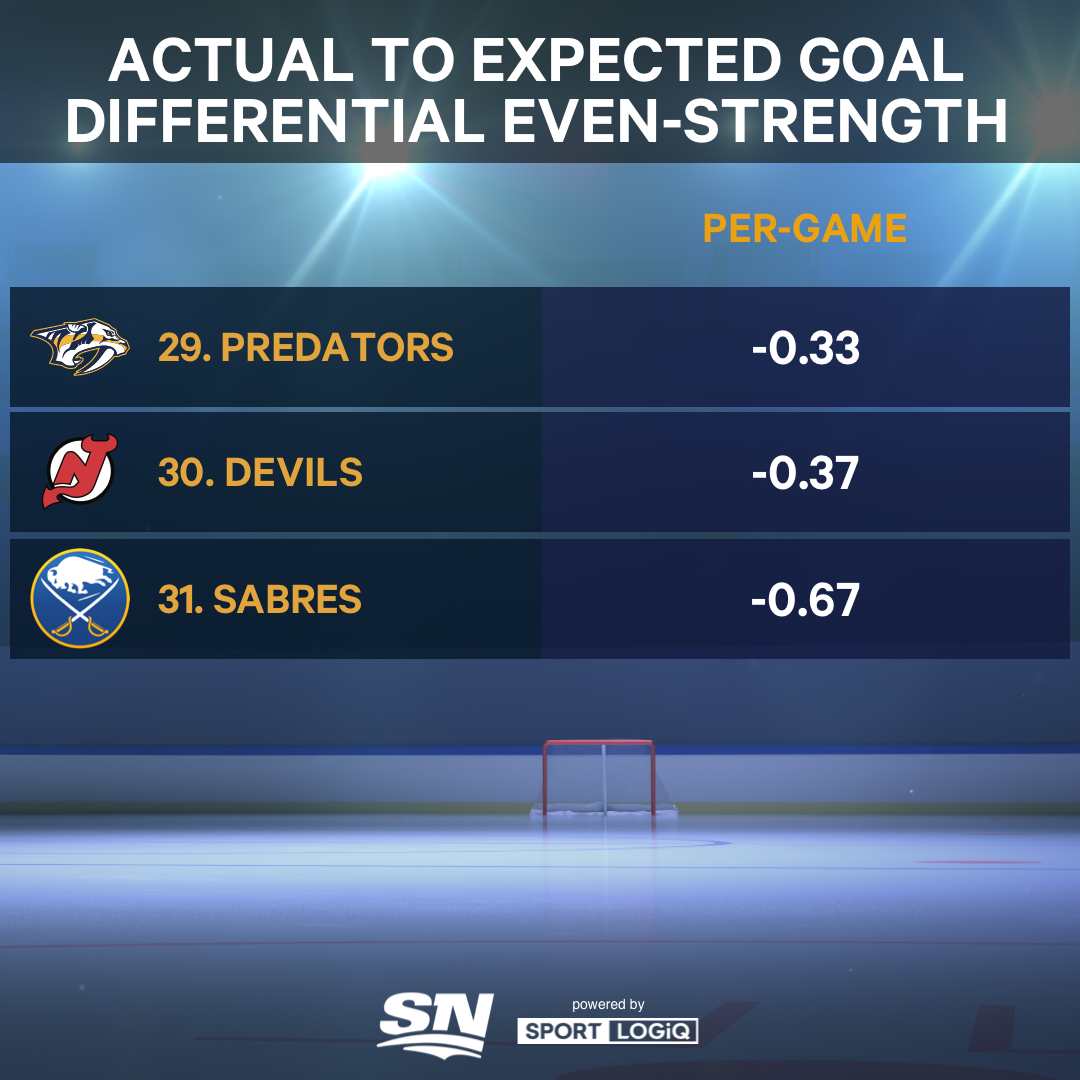
Long story short, the Sabres don’t create much in terms of dangerous offensive opportunities at even strength and they do a poor job of finishing the chances they get. How can Buffalo create more offence at even strength? Getting the puck into the offensive zone and limiting turnovers while they are there would be a good start.
The Sabres have the lowest success rate when carrying the puck into the offensive zone of any team in the NHL, doing so successfully on just 51 per cent of their attempts. When they do have the puck in the offensive zone, the Sabres turn it over on more than a quarter of their puck touches — 26.1 per cent.
DEFENCE
Nothing will get better in Buffalo until the Sabres improve defensively. The amount of defensive breakdowns in their twelve-game winless streak has been alarming, to say the least. On too many occasions it has looked as though there either isn’t a clear plan, or if there is, the players have been unable to execute it.
The Sabres rank last in the NHL in expected goals-against average at even strength, 2.74, and second-last in actual goals-against average, 2.89. While the Sabres have had trouble entering the offensive zone with the puck, that hasn’t been a problem for their opponents as Buffalo has the sixth-worst zone denial rate of any team in the league. A lack of forward back-pressure and simple mix-ups like this have led to far too many dangerous opportunities against.

Buffalo doesn’t need to look any further than the Calgary Flames to see what a difference simple adjustments can make in this critical area of the game. Before the Flames put Darryl Sutter behind the bench, Calgary had the third-worst zone denial rate in the league, ranked bottom 10 in possession entries against, and allowed more rush goals per game than any team at even strength.
In four games under Sutter, Wednesday’s 7-3 thumping included, the Flames rank top 10 in zone denial rate and limiting possession entries against, and are in the top 15 in limiting rush goals against. A small sample, yes, but their four games came against Montreal and Edmonton — both teams play fast and are top-10 in rush goals.
Slowing opponents down and limiting dangerous rush chances comes down to structure and hard work more than anything else, including talent. That’s how Calgary has been able to see immediate improvements in these areas and the same can apply for Buffalo. To what extent, we will see but this should be an immediate focus.
[snippet id=4167285]
INDIVIDUAL PLAYER IMPROVEMENT
As for individual players who may benefit the most from a coaching change, there are a couple of prime candidates in Rasmus Dahlin and Jeff Skinner. Dahlin has all-world talent and has not played near to the level he is capable of this season. Skinner has not been afforded the opportunity to come anywhere close to living up to the contract he earned in June of 2019.
Dahlin is a minus-27 through 28 games this season. For as many flaws that exist with this metric, there is no positive way to spin this. It’s eerie how similar Dahlin’s numbers are this season compared to last when you look at the underlying micro-stats. Puck possession time, turnover rates, zone entry denials, defensive plays — there are no meaningful decreases in performance.
Dahlin is still being insulated against the more difficult match-ups Sabres defencemen face and he starts his shifts in the offensive zone more than any Sabres player at even-strength. However, some of the goals scored against Buffalo while he has been on the ice have left viewers scratching their heads. On a pair of goals in recent games against the Islanders and Flyers, Dahlin seems to be defending neither the puck carrier nor the opponent who is available to receive a pass in a dangerous scoring position.

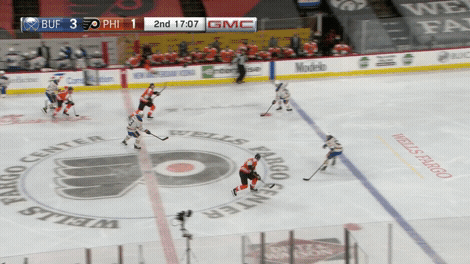
Whether Dahlin had been instructed to defend in the manner in which he did, or this is simply how he read these plays, improving this type of net-front defence shouldn’t be too difficult a task.
As for Skinner, after scoring 40 goals in his first year with the Sabres he has managed just 16 in 84 games since. Skinner played predominantly with Jack Eichel and Sam Reinhart at even strength and was a fixture on the Sabres’ top power play unit. When Krueger took over last season, Skinner saw his time with Eichel and Reinhart cut drastically and played sparingly on the top power play unit as the season wore on. This season, Skinner has played a bottom-six role, predominantly with Curtis Lazar and Riley Sheahan or Lazar and Casey Mittelstadt as his linemates. Skinner ranks eighth among Sabres forwards in power play ice time, averaging just over one minute per game.
Despite the lack of ice time, power play time, and top-six caliber linemates, Skinner still ranks top-five on the team in scoring chances, rush chances, and expected goals. That may not make Sabres fans feel any better about their $9 million per year forward having scored just twice in 25 games, but there is only so much he can be expected to do in such a limited role. Of course, Skinner is responsible, to an appropriate degree, for his lack of production, but he hasn’t been given much to work with this season either.
An argument can be made that there is no room for him in the top-six with Hall and Victor Olofsson ahead of him at left wing on the depth chart. Fair enough, but neither of those players has outperformed Skinner at even strength to a point where not giving Skinner a greater role would be unjustified. Here’s a look at the three left-wingers’ production in key offensive areas at even strength this season.
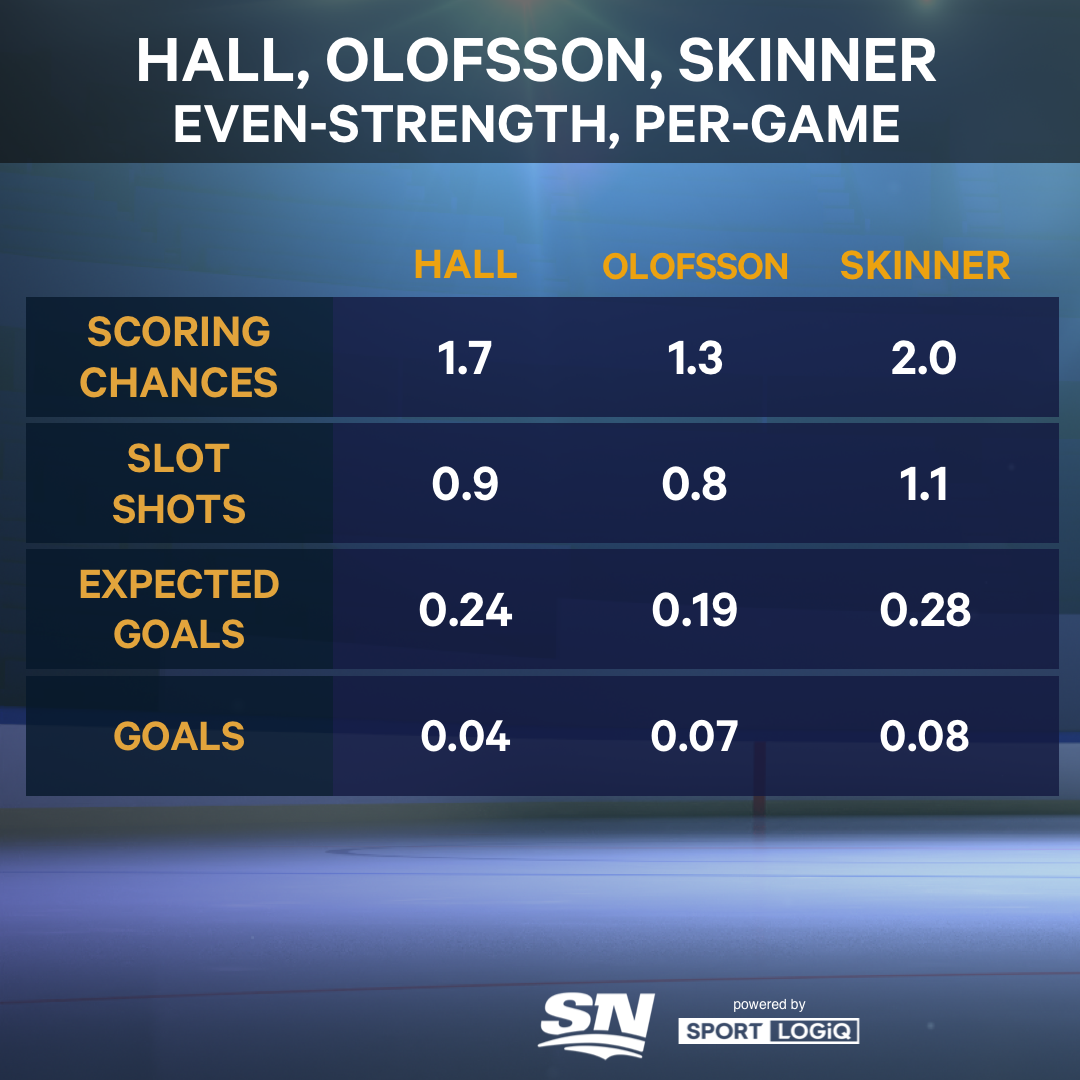
Skinner has outperformed the two left wingers in these key offensive areas despite his deployment this season. Keep in mind, this does not account for playing an average of over two minutes less at even strength per game either.
Whether the new coaching staff believes elevating Skinner’s role will help the player and ultimately the team remains to be seen, but there is evidence to suggest that Skinner and the team may be best served with him on one of the top two lines in Buffalo.
There will be lots of work to do to get this Sabres team out of the funk it’s currently in, but a good chunk of the major issues facing this team seem to be coachable. A better zone entry strategy and commitment to fewer turnovers in the offensive zone is coachable. More of an emphasis on back pressure from forwards and a higher gap at the defensive blue line by defencemen is coachable. Getting Dahlin back to a level he is capable of and potentially giving Skinner more tools to work with to generate more offence — coachable.
The post-Krueger era is upon us. Let’s see what difference it makes.
[relatedlinks]
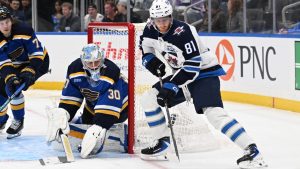

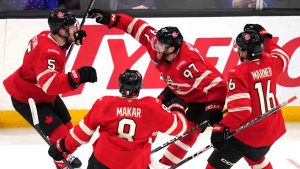
 2:51
2:51